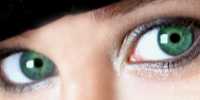
09 Nov Which Questionnaires Best Reflect Dry Eye Symptoms?
MedicalResearch.com Interview with:
 Jennifer P. Craig, Associate Professor
Jennifer P. Craig, Associate Professor
Department of Ophthalmology
New Zealand National Eye Centre
Auckland, New Zealand
MedicalResearch.com: What is the background for this study?
Response: Dry eye disease is a complex multi-factorial condition, which affects between 5% to 50% of the adult population in different parts of the world. The condition can have profound effects on the ocular comfort, visual function, and quality of life of sufferers. In both clinical practice and academic research settings, validated questionnaires are frequently used to screen for dry eye symptomology, before clinical assessment of tear film homeostatic markers is conducted to make an overall diagnosis of dry eye disease.
Although a large number of validated symptomology questionnaires has previously been developed, the recently convened Tear Film and Ocular Surface Dry Eye Workshop II (TFOS DEWS II) identified that the considerable heterogeneities in the study populations, methodologies, and reference standards used in earlier diagnostic accuracy studies introduced significant challenges when trying to compare the diagnostic performance of these screening instruments.
The current study is the first to offer a direct comparison of five commonly used validated questionnaires within the same study population, and uses the global consensus criteria for tear film homeostatic disturbance developed by the TFOS DEWS II as the reference standard.
MedicalResearch.com: What are the main findings?
Response: The results of the study showed that the Ocular Surface Disease Index (OSDI) and the Symptom Assessment in Dry Eye (SANDE) questionnaires exhibited superior discriminative ability in detecting clinical signs of tear film homeostatic disturbance, as defined by the global consensus TFOS DEWS II criteria, than the three remaining validated questionnaires tested.
The OSDI is a twelve-item screening instrument which explores dry eye symptomology and its impact on visual function and quality of life, while the SANDE questionnaire is based on two visual analogue scales which asks patients to rate the overall frequency and severity of their symptoms. Nevertheless, it was noted that the diagnostic accuracy values of the five validated questionnaires were all relatively modest, with all sensitivity and specificity values being less than 80%.
MedicalResearch.com: What should readers take away from your report?
Response: The OSDI and SANDE questionnaires demonstrated the greatest discriminative ability in detecting clinical signs of dry eye disease, among the five commonly used validated symptomology questionnaires, which would support their use in the diagnosis and monitoring of dry eye disease in both research and clinical settings. However, the differing nature of the two questionnaires would suggest that their use might be more suitable in different contexts. For example, the OSDI might be useful for providing a global evaluation of dry eye symptoms and their overall impact on the functionality and quality of life of a patient. On the other hand, the SANDE questionnaire is relatively shorter and less time consuming, and might be more suitable in resource and time-constrained settings, for example repeated measurements conducted over a period of time to monitor the therapeutic effects of dry eye treatments.
In addition, it should be noted that all of the five commonly used validated questionnaires demonstrated relatively modest diagnostic accuracy values. This would support the TFOS DEWS II recommendations that careful evaluation of tear film homeostatic markers is indicated, should a positive score be obtained on the initial screening symptomology questionnaire.
MedicalResearch.com: What recommendations do you have for future research as a result of this work?
Response: The study population in the current study was predominantly of European, East Asian, and South Asian ethnicity, and participants with ophthalmic surgical procedures within the preceding 3 months were excluded. It might be interesting to compare the results of the current study with future studies conducted on other ethnic groups, as well as patients in the post-operative setting.
Citation:
[wysija_form id=”3″]
[last-modified]
The information on MedicalResearch.com is provided for educational purposes only, and is in no way intended to diagnose, cure, or treat any medical or other condition. Always seek the advice of your physician or other qualified health and ask your doctor any questions you may have regarding a medical condition. In addition to all other limitations and disclaimers in this agreement, service provider and its third party providers disclaim any liability or loss in connection with the content provided on this website.
Last Updated on November 9, 2018 by Marie Benz MD FAAD
